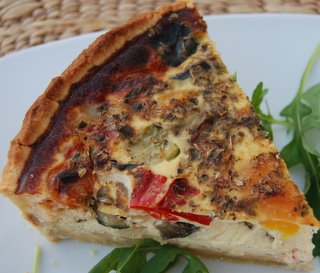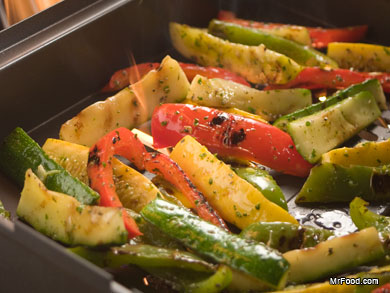Source:- Google.com.pk
White florets bundled together and cupped by fresh, green leaves - We are talking about a vegetable that is often taken for granted and is probably least appreciated. In an Indian household, cooking with cauliflower starts with the quintessential gobhi parathas, speeds up to pakodas and it mostly ends as being the regular side-dish.
Despite the unconditional attachment to this flowering veggie, cauliflower escapes the realm of culinary experimentation for many. But the good news is that this year,
cauliflower is set to make a comeback. Chefs and restaurants have already begun experimenting with it and have predicted that it is going to be one of the most fashionable veggies that will rule 2015. It has become a regular on gourmet menus, all jazzed up with bold textures, sauces and spices.
This humble vegetable not only offers a wide range of unexplored culinary possibilities but also a handful of health benefits that you may have not known. Some studies have shown that cauliflower secretly holds anti-cancer properties. It is a rich source of a certain cancer killing compound called sulforaphane which is also great for maintaining blood pressure levels and kidney functions. It is enriched with vitamin c, anti-oxidants, essential micro-nutrients and fibre.
Cauliflower aids in maintaining proper digestion and has anti-inflammatory properties as well. Not only this, it is low in fat, cholesterol and carbohydrates. With every 100 grams of cauliflower, you are consuming just 25 calories, 1 percent carbohydrates, less than 1 percent of fat and about 80 percent Vitamin C. According to health experts, Vitamin C is one of the most essential elements for human body. It helps our body combat viruses and bacterial invasion, and at the same time strengthens immunity.
Tips to Buy, Store and Cook
While buying cauliflower, always go for the ones that have white florets without any sign of discoloration. Make sure that the veggie is fresh in its entirety - from florets to its leaves. You can choose to cook its stem and leaves as well. Break it into small portions to speed up cooking. Do not overcook it as it may tend to get soggy. Go for a quick boil or steam it. You can choose to sauté or stir fry it or even add it raw to your salads for that extra crunchiness.
Cauliflower is very versatile and can be used in a lot of ways. From soul warming soups, cool fresh salads to snappy snacks, sensational curries and much more. You'll be surprised by the variety of dishes that it can serve you with. So don't hold back and experiment with our best recipes.
Bharwan Gobhi
From the kitchen of Chef Marut Sikka comes this classic Indian preparation. Stuff your cauliflower with a khoya and cheese mixture, bathe it in a batter and deep fry it to a crunchy, golden glory.
Honey Cauliflower
The sweet texture of cauliflower matched with honey and lime. A no-fuss appetizer to please to please those unannounced guests.
No eggs? No problem! Gram flour made from ground chickpeas provides a delicious, crispy alternative
My children love pancakes. Sweet or savoury, they will wolf them at an insatiable rate. The call for them one recent lunchtime was loud and clear, just as I had run out of eggs. That's where the gram flour came in - made from ground chickpeas and mixed with water, it makes a great batter to fry or bake into thin, crispy pancakes. And the chickpeas bring a crisp texture and a lovely earthy flavour to that batter.
My stock method of cooking the batter is in the Italian style of farinata or socca, and I experimented by spicing the batter a little. Dressed with olive oil, a squeeze of lemon, piled high with cooked vegetables (green beans or broccoli are a favourite) and a blizzard of grated hard cheese such as parmesan, these have the kids in raptures when they are served.
(Makes 6)
250g gram flour - sifted
450ml cold water
1 tsp salt and more to taste
½ cauliflower - broken into even-sized florets
1 bunch spring onion - trimmed and sliced
3 green chillies - deseeded and sliced - omit or replace with green peppers if you'd prefer
1 tsp turmeric
1 tsp garam masala
2 tsp onion seeds
2 tsp mustard seeds
3 tbsp vegetable oil
Lemon or lime to serve
Whisk the cold water into the flour and beat until smooth, then allow to rest for at least 30 minutes while you prepare the rest of the ingredients.
Bring a pan of water to the boil and blanch the cauliflower for 2 minutes, then drain and set aside. Once cool enough to handle chop into fingertip-sized pieces.
Add 1 tsp salt, the turmeric and garam marsala to the batter.
Heat ½ tbsp of oil in a non stick pan over a high heat and add a sixth of the cauliflower, green chillies, spring onion and the onion and mustard seeds. Give the pan a quick toss, then spread the ingredients out and pour over a sixth of the batter.
Allow to cook and colour for about two minutes, then gently flip over to cook the other side. You want the pancake to be golden brown. They can be quite fragile but, if they break, just reassemble once they have been turned over. Serve as soon as possible, with wedges of lime or lemon and Indian pickles.
This baked polenta dish is a great option as a
substitute for a traditional lasagna, a favorite in our house. Anything
loaded up with roasted vegetables is worth a try! However, buying corn
products can be troublesome, as buying organic and non-GMO means a lot
of label-reading. Luckily, I found a great option in a local market.
It's organic Floriani Red Flint, a variety that was near extinction but
re-discovered a little over a decade ago and is now grown in organically
in Lodi, California — a relatively short distance away. Just the story
of the source of this polenta
alone made the bake a more interesting adventure. Plus the fact that it
is grown fairly locally, milled fairly locally and distributed by a
local company means it was a perfect option for this recipe.
Everything about this recipe is easy. The only
trick is patience after it comes out of the oven. It needs to sit for
awhile to let the polenta settle and firm up at the bottom. Cut into it
too soon (like I did in my impatience to taste it) and you'll get a bit
of a runny mess. So definitely do as step 5 says and let it sit for at
least 10 minutes. Don't worry, it'll stay hot. And the leftovers the
next day — wrapped in parchment paper and foil and heated up in the oven
for about 20 minutes — are just as delicious as when it's first baked.
Best Vegetable Recipes Vegetable Recipes 2015 in Urdu Filipino for Kids Indian Chinese Panlasang Pinoy Images Photos Pics
Best Vegetable Recipes Vegetable Recipes 2015 in Urdu Filipino for Kids Indian Chinese Panlasang Pinoy Images Photos Pics
Best Vegetable Recipes Vegetable Recipes 2015 in Urdu Filipino for Kids Indian Chinese Panlasang Pinoy Images Photos Pics
Best Vegetable Recipes Vegetable Recipes 2015 in Urdu Filipino for Kids Indian Chinese Panlasang Pinoy Images Photos Pics
Best Vegetable Recipes Vegetable Recipes 2015 in Urdu Filipino for Kids Indian Chinese Panlasang Pinoy Images Photos Pics
Best Vegetable Recipes Vegetable Recipes 2015 in Urdu Filipino for Kids Indian Chinese Panlasang Pinoy Images Photos Pics
Best Vegetable Recipes Vegetable Recipes 2015 in Urdu Filipino for Kids Indian Chinese Panlasang Pinoy Images Photos Pics
Best Vegetable Recipes Vegetable Recipes 2015 in Urdu Filipino for Kids Indian Chinese Panlasang Pinoy Images Photos Pics
Best Vegetable Recipes Vegetable Recipes 2015 in Urdu Filipino for Kids Indian Chinese Panlasang Pinoy Images Photos Pics
Best Vegetable Recipes Vegetable Recipes 2015 in Urdu Filipino for Kids Indian Chinese Panlasang Pinoy Images Photos Pics
Best Vegetable Recipes Vegetable Recipes 2015 in Urdu Filipino for Kids Indian Chinese Panlasang Pinoy Images Photos Pics









No comments:
Post a Comment